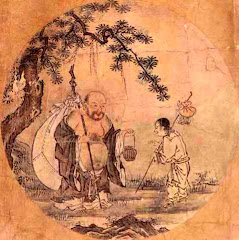
There is nothing like the Ten Commandments in the East. An overly moral concept is not there. So the problems in the East are different from the West. With people from the West, guilt is the problem. Deep down they feel guilty. Even those who have revolted feel guilty. It is a psychological problem, concerned more with the mind and less with the being.
First, their guilt has to be released. That is why the West had to develop psychoanalysis and confession. They were not developed in the East because they were never needed. In the West you have to confess. Only then can you get free from the guilt that is deep inside. Or you have to go through psychoanalysis so that the guilt is thrown out. But it is never thrown out permanently, because the concept of sin remains. The guilt will accumulate again. So psychoanalysis and confession can only be a temporary help. You have to confess again and again. They are only temporary helps against something that has been accepted. The root of the disease -- the concept of sin -- has been accepted.
In the East it it not a question of psychology, it is a question of being. It is not a question of mental health. Rather, it is a question of spiritual growth. You have to grow spiritually, to be more aware of things. You do not have to change your behavior, but to change your consciousness. Then the behavior follows.
Christianity is more concerned with your behavior. But behavior is just peripheral. The question is not what you do; the question is what you are. If you go on changing what you are doing, you are not really changing anything. You remain the same. You can be a saint outwardly and still be the same being inside.
Jainas have not created any meditative techniques either. They have only created different formulas: Do that. Do that. Don't do this.... The whole concept is centered around behavior. A Jaina monk is ideal as far as his behavior is concerned, but as far as his inner being is concerned he is very poor. He goes on behaving just like a puppet. That is why Jainism has become a dead thing.
Buddhism is not dead in the same way because a different emphasis is there. The ethical part of Buddhism is just a consequence of the meditative part. If behavior has to be changed, it is just as a help to meditation. In itself, it is meaningless. In Christianity and Jainism it is meaningful in itself. If you are doing good, then you are good. For Buddhism this is not the case. You have to be transformed inwardly.
Doing good can help, it can become a part, but meditation is the center.
So of the three, only Buddhists have developed deep meditation. Everything else in Buddhism is just a help -- not significant. You can even discard it. If you can meditate without any other help, then you can discard the rest.
But Hinduism is even deeper. That is why Hinduism could develop in so many different dimensions, like tantra. Even what you call sin can be used by tantra. Hinduism is, in a way, very healthy -- but chaotic of course. Anything healthy is bound to be chaotic; it cannot be systematized.




No comments:
Post a Comment